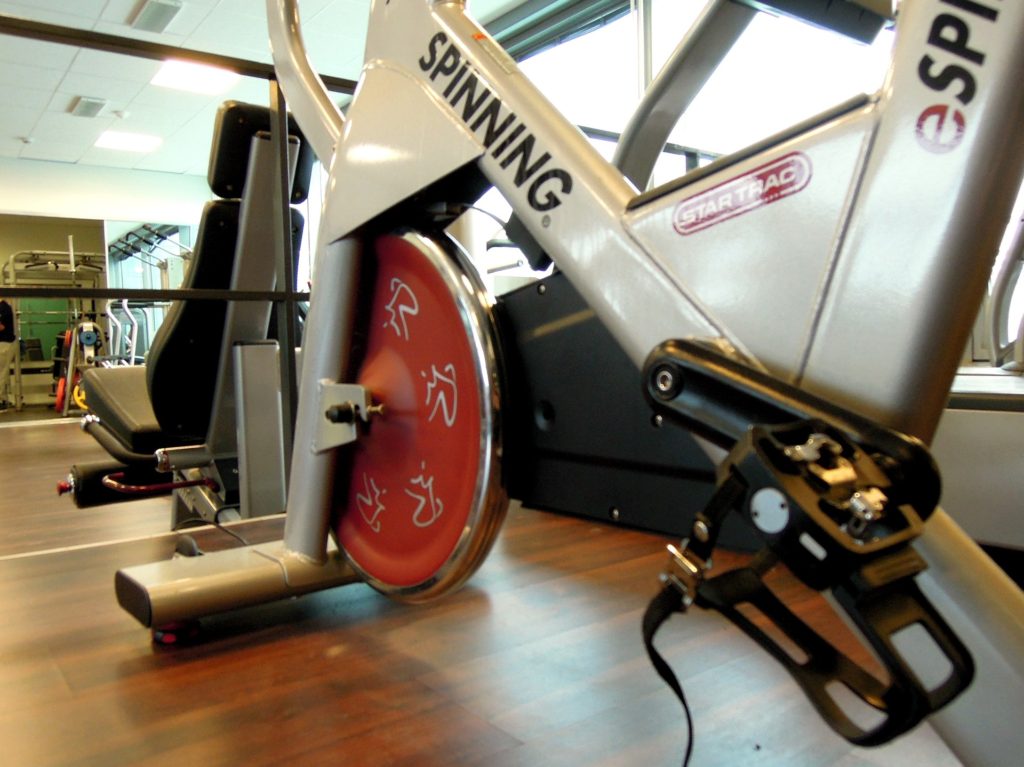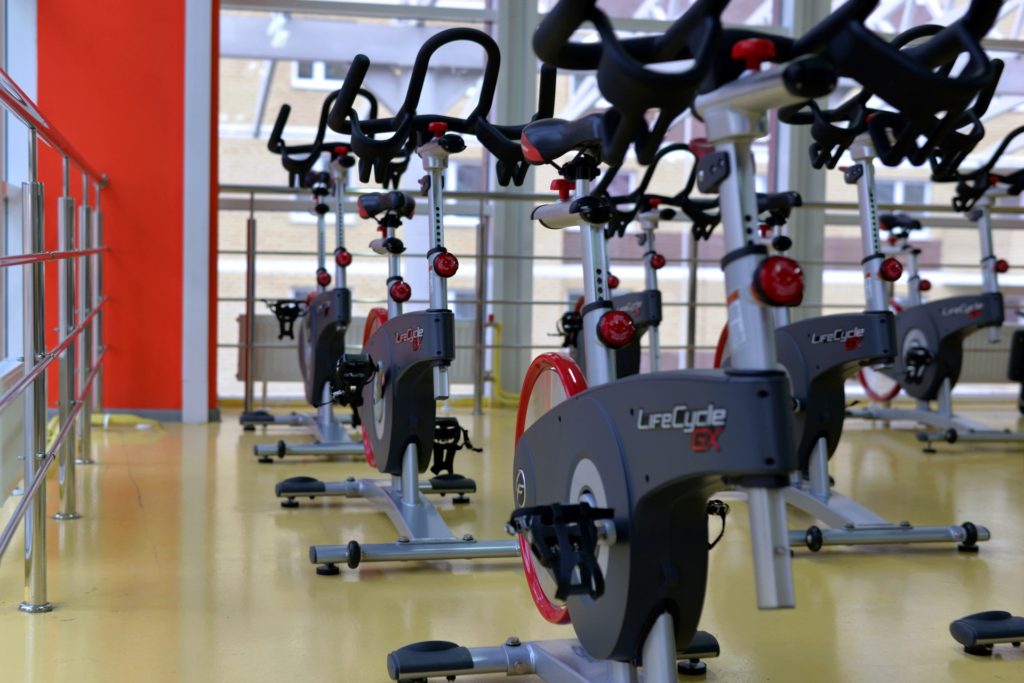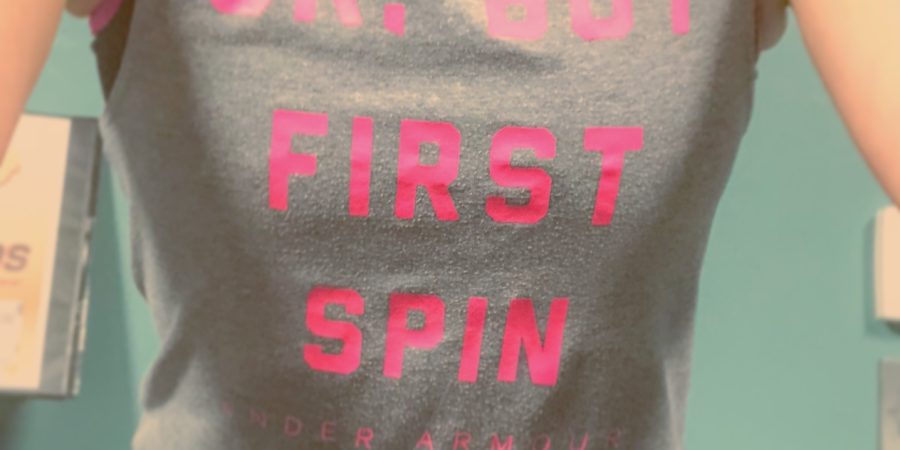Hello Fitness Buffs!
What you don’t think you’re a Fitness Buff? If you’re reading this post, you’re at least a little curious about fitness and most likely looking for tips on indoor cycling. Hooray! I am so happy to share some knowledge with you!
This post will cover everything you need to know about making it through your first indoor cycling class. And then through your second. And third. And forever, because once you start you’ll never want to stop.
First, why you should listen to me:
Who am I to be giving you this advice? Well, I’m actually a professional! 😉
I’ve been leading indoor cycling classes since 2013. I am certified in Les Mills RPM, an indoor cycling class created by a New Zealand based company called Les Mills International. (If you are a fitness buff, you may have heard of some of their other programs like BodyPump or BodyCombat.) Les Mills offers pre-choreographed group fitness classes paired with some pretty motivating music. Classes designed by Les Mills are scientifically proven to boost your overall fitness and we instructors are trained to keep you safe.
In general, indoor cycling classes can vary depending on the studio/gym, format, and instructor. But for the most part, they’re all pretty much the same. You get on a bike, and ride. Since I am most familiar with the program I teach, this post will focus a little on Les Mills RPM, however the tips can be applied to pretty much any indoor cycling class out there.
How to have your best indoor cycling class

Arrive Early
There are only so many bikes available. Check with your gym or studio to find out if it’s necessary to reserve a spot in class. Some clubs have an online registration where you can book your bike ahead of time. Others will have you sign in to class before it starts. Either way, be prompt to ensure you get a space in class.
Be Prepared
Bring water, a towel or sweat bands, and wear appropriate clothing.
You are going to sweat buckets. (YAY!) I recommend wearing leggings or padded cycle shorts if you have them. Tight-fitting bottoms are best. Running shorts will get uncomfortable as you sweat and baggy pants might get caught on the bike when you stand and sit repeatedly.
Depending on the gym, normal gym shoes may work fine on a spin bike. However cycle shoes are definitely best. With a cycle shoe your feet actually clip into the pedal and you become “one with the bike” whereas with a normal shoe your foot has the opportunity to rise off the pedal when you race. With cycle shoes you’ll be able to maximize the tight little circles you’ll try to create when you go really fast. Some studios will let you rent cycle shoes for a fee. If you are bringing your own, check to make sure you have the correct clips. Most spin bikes will fit the two-prong clip.
Also, as you prepare for class, think about your tummy. Personally, my tummy gets a little angry if I eat certain foods before a big workout. Most indoor cycling classes are high intensity cardio workouts, so you will need some fuel to keep you moving. My personal preference is a granola or protein bar, or some trail mix, about an hour before class for a little boost. I highly advise against anything too heavy. Nobody wants to workout with alfredo in their belly. Trust me.
Introduce Yourself
If it’s your first class, you’ll probably feel like a fish out of water, which is super normal. Introduce yourself to the instructor and let them know you are new. A good instructor will walk you through properly setting up your bike for your body. Most spin bikes are fairly customizable as far as seat height, handlebar height, and the distance between the saddle and handlebars. The instructors might also give you a brief overview of what to expect in class, when and how to add resistance to the bike, and proper technique for riding safely.

Be Open Minded
Even if you are a super fit person, your first cycle class will probably kick your butt. And that’s ok. Literally, it’s supposed to! Indoor cycling is a great workout for people of all fitness levels. I’ve seen 70-year-old members ride regularly. I’ve seen triathletes use indoor cycling as part of their training plan. I’ve seen people who’ve never had a gym membership wander into a cycle studio and end up as regular attendees.
The key is to have an open mind and to be ready to work hard. The workout is what you make it. The format I teach, Les Mills RPM, recommends the Smart Start approach for new participants. They recommend for your first class you stay for the first four songs and after that, it’s ok to leave or dial it back and ride at your own pace for the rest of class. Then, as you get stronger and more confident you can add on another song and another until you are successfully completing a full class.
I personally recommend that you listen to your body. It’s ok if you don’t turn up the resistance every time the instructors says to. It’s ok if you don’t stand every time the class does. You only need to work hard, whatever that means for you.
Class Layout
Ok, this is specific to the format I teach, Les Mills RPM. Other programs might look and feel a little different, but I thought it is important to give you a picture of what a full cycle class looks like.
During the standard RPM class, we perform 45 minutes of work with a cool down and stretch. The full class includes 7 working tracks, or songs, with choreographed movements designed to get you fit.
Each track has a different emphasis or purpose. You’ll begin with a warm up to get the body ready for the workout. Then you’ll begin to increase intensity. You’ll tackle hills, intervals, and sprints. Then you’ll end the class with a mountain climb where you’ll simulate climbing up big hills on the bike.

Throughout the class the instructor will guide you on when to add resistance to the bike. This makes the legs work a bit harder and it feels like you are climbing up hill. At points in class you may be riding in the saddle (aka the bike seat) with heavy resistance on the dial. This primarily works the quad, the big powerhouse muscles sitting on top of your thighs. At other times, you might add heavy resistance to the bike and stand on the pedals. From the instructor might tell you to lean in or lean back to hover over the saddle. Your body position in a standing climb will work both your quads and glutes.
There will also be points in class where you’ll race. Essentially, you sprint quickly with control of the pedals. While racing it is super important to have enough resistance on the dial that you have control. Often, people dial back the resistance so that they can pedal faster, however they loose their control and the pedals move with the momentum of the bike not by the push of your legs. Losing control of the bike can be dangerous and there is less physical benefit to racing this way.
Look for my next post soon where I will breakdown each track in an RPM class to give you a better idea on what to expect.
So there you have it. Your guide to a successful indoor cycling class. Now you know what you bring and what to expect for your first class.
If you are on the fence about trying a cycling class, I totally encourage you to GO FOR IT! You have nothing to lose but a little sweat 😉
If you are looking for some added confidence, check out my post on 10 Ways to Hit the Gym with Confidence!
Have you tried indoor cycling or Les Mills RPM? Do you LOVE it? What are your tips for a successful class?
Comment below!

I appreciate articles like this, but I hate drinking from plastic or metal. Even Lexan tastes weird to me. My solution? Buy Voss glass water bottles and reuse them. They have a slightly enlarged opening which makes it easier to pour water, tea or juice in. The oversized caps don’t strip out, and the hefty design takes abuse without failing. Granted the weight is a real penalty, if you are carrying it.
Great thought!!